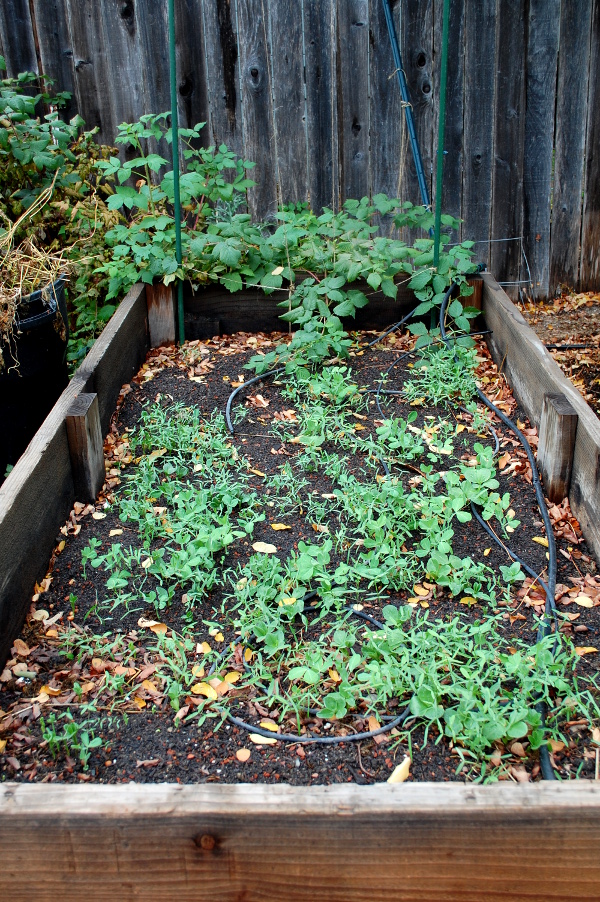
That is one of my garden beds. The plants your see are my cover crop, also called “green manure.”
Cover crops are plants that are grown over the winter to protect the garden bed and enrich the soil.
In this bed, I used a Green Manure Mix, which “contains 50% Conventional Bell Beans, 25% Organic Biomaster Peas and 25% Organic Purple Vetch. Peas cover the ground, while vetch climbs up the beans.”
In another bed, I’m trying out red clover.
Here’s how a cover crop works: you plant the seeds in the fall and it grows all winter. About 6 weeks before you’re ready to plant your spring garden, you dig the cover crop into the dirt and let it decompose. The organic matter enriches the soil and leads to a happier vegetable garden.
Someone once told me that soil doesn’t like to lie barren. In a forest, patches of dirt are soon covered with plants. Growing a cover crop in your raised beds is to simply put beneficial plants into your garden before weeds can sprout.
So what’s beneficial about green manure/cover crops? They
-
* Fix nitrogen to your soil, a major nutrient all plants need.
* Improve the structure of the soil.
* Keep rain from washing away your good soil.
* Stop weeds from sprouting in your garden.
* Keep soil from compacting.
* Encourage beneficial insects.
* Discourage pests.
And, for me, there’s the added benefit of keeping my cat from using my raised beds as a litter box.
Here’s a list of cover crops. For most of us, now is the time to get them in the ground.

Technically, cover crops are perennials & green manure plants are annuals, but they’re both good for replenishing the soil & adding nutrients, especially after you mow them down. The legumes add nitrogen after you cut them. If interested in finding more info about similar plants, google Nutrient-catchers (roots go down deep to pull up nutrients for all the plants grown around them). If you have heavy metals or toxins in your soil, google phytoremediation.
Thanks Gail!